We hear the term 4C everywhere, but what does 4C hair look like? What is it, and why does it need a different care routine? More importantly, how do you know if you have 4C hair, as opposed to 4A or 4B?
You probably actually have a mix, and that’s okay. Let’s define 4C and see how to care for your hair if the majority is 4C.
What is 4C Hair?
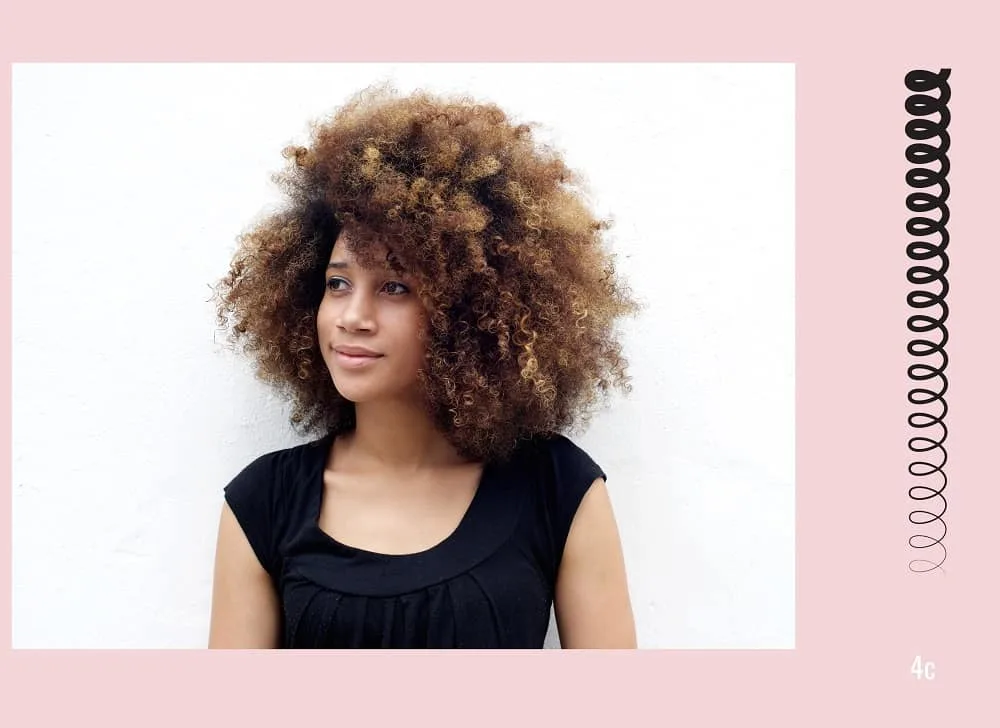
Similar in texture to 4B hair, 4C hair is more tightly coiled and tends to be more fragile. The 4C hair has a very tight zig-zag pattern in each strand that is often unnoticed by the eye.
As a result, 4C experiences the most shrinkage of any hair type, which can reach 75% or more in some rare cases.
How Do You Know if You Have 4C – Not 4A or 4B?
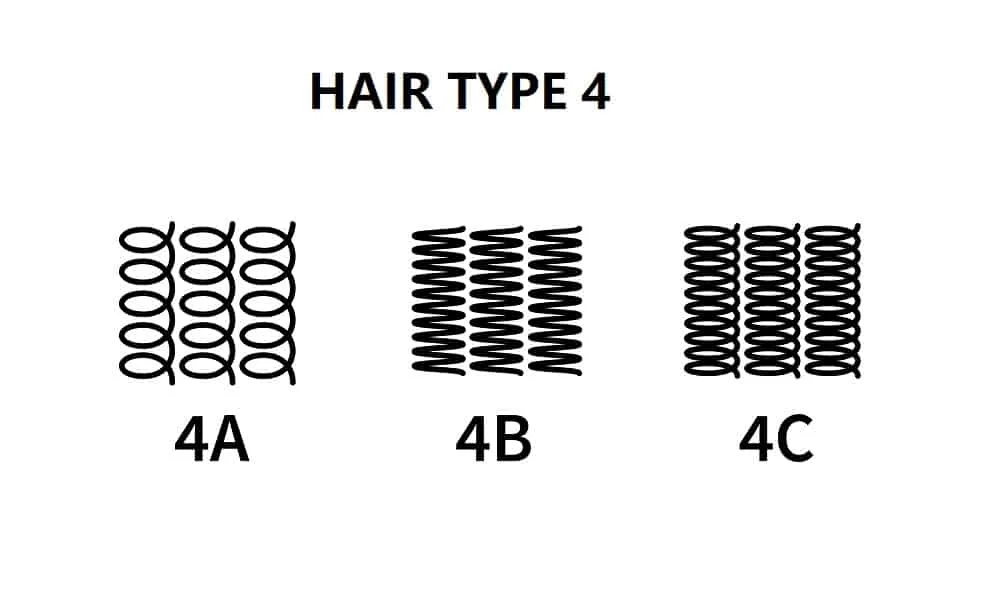
Type four hair is all kinky. The tightness of the coil progresses from 4A through 4B to 4C. Because the hair strands for this hair type tend to be thin and numerous, it can be difficult to tell one from the other when products are added.
We need the hair to be product-free in order to see the difference. So after you wash your hair, don’t use any conditioner and let it dry. Then look for the following:
You’re just stepping in from type 3C hair, so you’ll still have springy coils. They will just be tighter than 3C, but you’ll still be able to see them. Your hair won’t shrink much, and the curl pattern will be definite.
This curl pattern hardly has a pattern at all. It is like a coil that has been unwound. Some locks of your hair might appear flattened or stretched than others. There is very little curl definition to your hair without products and it looks very cottony. There are some problems with 4B hair holding a curl.
4C Natural Hair
4C Hair has very tight coils. If you pluck a strand, it will wind itself up to its minimum size. Then it will look just like the coil in a retractable pen when you squash it between your fingers–shrinkage! 4C hair can be wiry, but it’s composed of teeny little curls when you feel the roots.
Understanding the Characteristics of 4C Hair Type

4C hair is the densest of all curly hair. It has hundreds of thousands of curls in a zigzag pattern so subtle that they’re hard to discern at first glance, but when you look closely, you can see the individual coils. If your hair has a coarse dry texture that looks like a big ball of cotton, it’s probably 4C hair.
4C hair is also prone to extreme shrinkage; up to 75% is considered normal. This extra shrinkage leads to more tangles and knots, and more tangles and knots lead to more broken strands. You know the rest of the story!
It’s also quite normal to have different hair growth in various sections of your scalp. You may have 4B in the back area and 4C on the top and front. Don’t worry about that.
All the pointers we’ll be giving you in this 4C hair care guide will also work great on 4B hair. The key to success is following through with our tips and not getting lazy when you’re short on time.
How to Take Care of Natural 4C Hair
4C hair is often wiry and stiff to the touch. Unless you decide to use chemical relaxers, there’s not much you can do to change that fact. But there are ways to make your hair relatively softer.
If you’re willing to learn about your hair type and the care it requires, you can be successful in managing your natural 4C curly hair.
1. Cleansing Dry Hair That’s 4C
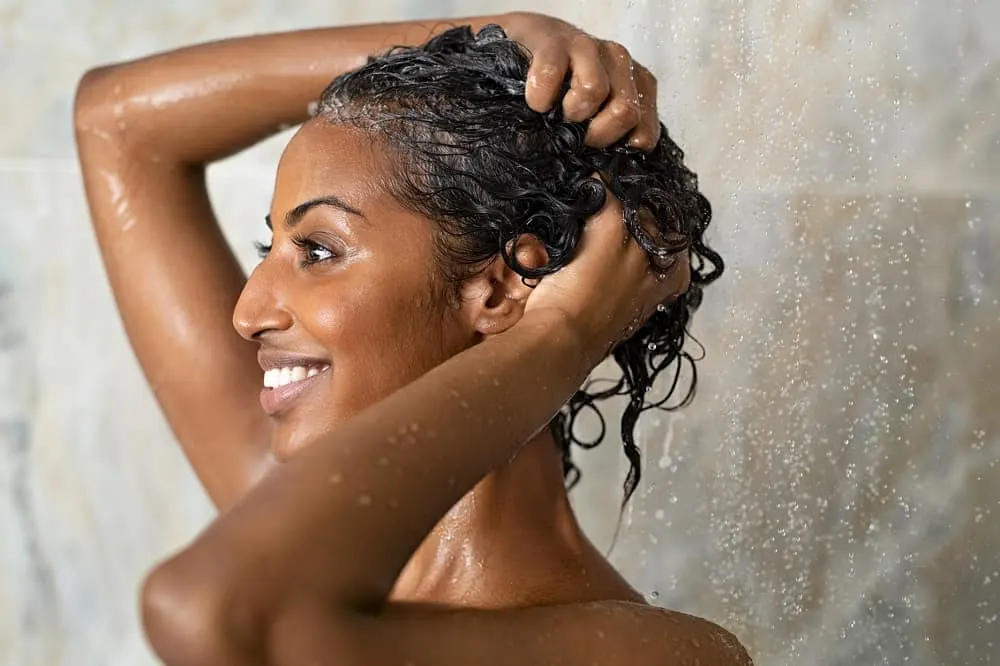
Scalp that grows 4C hair rarely produces sufficient sebum to moisturize the hair. Because it’s so dry, you don’t want to wash with shampoo too often as that will only dry it further. Wash your 4C hair with a non-sulfate shampoo every two to four weeks, earlier if you experience buildup or odors.
A pH-balanced moisturizing shampoo and conditioner will clean your hair and scalp and promote softer textures and increased growth.
Between shampoos, if your hair lacks moisture, try co-washing. Co-washing is cleansing your hair with a conditioner or specially made co-wash product.
But before you start cleaning, make sure to pre-shampoo. Leave the oil in your hair for a few hours so that it seeps into the hair strands. Coconut oil is good for this as it helps keep your hair from swelling due to oversaturation.
Hygral fatigue causes damage to the hair as the hair cuticle becomes compromised when the hair swells. When you detangle after cleansing without pre-pooing first, you could cause a lot of damage.
2. Detangle Your Coily Hair and Keep It Stretched
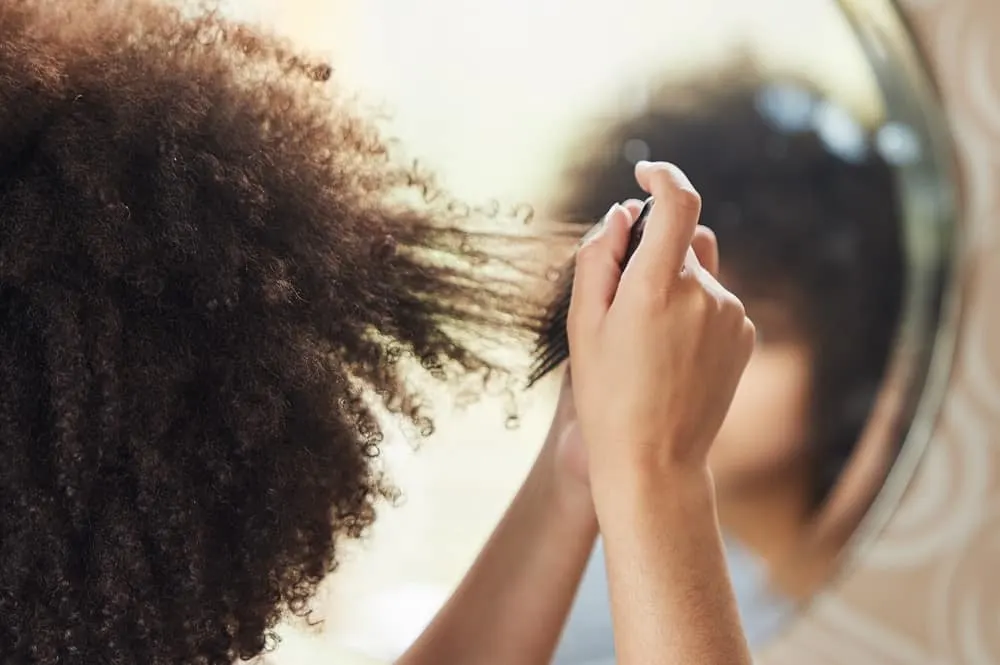
The experiment at the beginning was only to help you determine your hair type. Once you know, there’s no need to go back to product-free hair! To detangle, section your hair first. Then add a generous amount of leave-in conditioner to the section you wish to work with.
Gently detangle with your hand first by using the praying motion to slide your hands from the roots to the tips. Then use your fingers to go between the hairs of the section to remove tangles. Once finished, wrap the section into a Bantu knot.
Bantu knots are easy to form and keep the hair in place while detangling. You can leave them in your hair until they dry to stretch your hair. Or you can go back and braid or twist the sections.
Ideally, you can keep your hair stretched to some degree for the whole time before washing it again. You’ll see less breakage if you twist your hair at night to keep it stretched.
Related: Best Shampoos for 4C Hair
3. Use Phase Styling
Try not to change your styles too much but lightly manipulate your hairstyle in phases. So if you start out in braids to stretch your hair, leave them in as an updo for as long as your hair can still look neat.
Then release the hair and wear a wavy braid-out for a few days, twisting your hair at night to keep it stretched. When the style is worn out, gather your tresses up into an updo again. Try a wash-and-go as it begins to shrink by spraying your hair with water and adding a curl-defining product.
2. Working with Your Hair’s Porosity
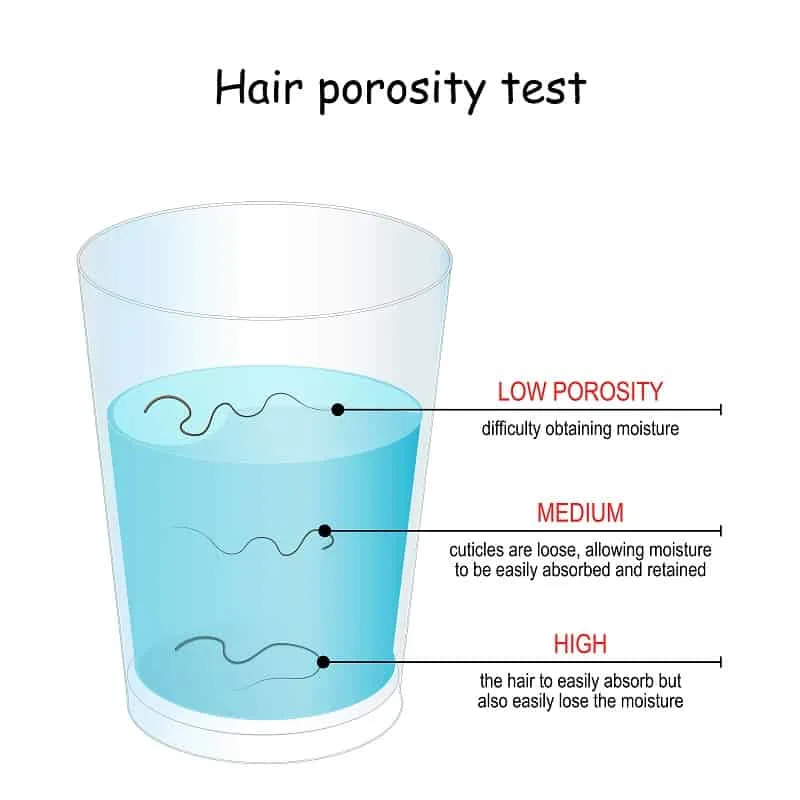
Natural 4C hair is well known for being low porosity. This means its hair cuticle has fewer holes and more densely compacted cell layers, making it hard to moisturize and hydrate.
Low porosity hair is usually a genetically occurring condition, typically found in the black community worldwide. When you have low porosity hair, you must find ways to open the cuticle to let the moisture in.
Rich hair masks (applied before and after shampooing), washing with warm water, using natural fruit and vegetable oils such as avocado, argan, or jojoba, and water-based non-alcohol hair products can help.
3. Give Your 4C Curly Hair a Good Night’s Sleep

Your hair needs rest and recuperation after daily exposure to harsh styling techniques and weather, such as humidity, extreme cold or heat, and super-dry environments.
One of the best ways to ensure your hair gets a break is by covering it at night when you sleep or when you’re at home relaxing.
When you cover your hair with a satin or silk cap, you protect it from additional friction and breakage caused by your head rubbing on a cotton or polyester pillowcase while you sleep.
(Ideally, use a satin or silk pillowcase for extra protection.) If you have long hair, your best bet is to pull it up into a topknot ponytail (aka pineapple) to keep it secure if the cap slips off during the night.
4. Keeping Your 4C Hair Hydrated
By now, it should be clear that the biggest challenge when dealing with natural 4C hair is keeping it moisturized. It’s easier said than done because the tight zigzag curl pattern prevents the sebum (natural scalp oil) from traveling down the length of the hair shaft.
To compensate for that issue, you’ll have to add moisture every day from an external source, such as hydrating creams, rich moisturizing masks, and leave-in conditioners like Infusium 23.
Applying hair butter such as Aunt Jackie’s Butter Creme Intensive Moisture Sealant is a better alternative than mineral oils or petroleum jelly. While these waxy lubricants are great for coating the hair shaft and sealing in the moisture on damp hair, they’re more difficult to wash out.
If you have to shampoo your hair several times to remove them, you end up canceling the benefits of using these products in the first place!
Instead, consider nutritive fruit or vegetable-based oils such as coconut, avocado, or jojoba that will absorb into the hair shaft in a few hours, protect the hair cuticle, and leave behind a lot of shine! Maple Holistic’s Avocado Oil is a great option.
Also, don’t forget to use good old-fashioned water to keep your hair hydrated. Spritz your hair as often as you like with plain water mixed with a lightweight moisturizing conditioner.
5. Best Hairstyles for 4C Hair

People with 4C hair make their 4B sisters green with envy. 4C hair holds a curl all day long and well into the week and sometimes the following week. Once you stretch and style it, the style holds for a long time.
- Flexi rod set – If you have the patience to roll small sections around rollers and sit under a hooded dryer, you’ll literally have curls for days. Just remember to use a setting lotion while rolling or some sort of curl cream.
- Teeny weeny afro – You can shave your hair all the way down, as is trending for many women right now, not just those with 4c hair. Or you can have an inch or so that you style into coils with a curl sponge.
- Braid-out – When you dry your hair in braids and then release it, you’ll have a voluminous wavy style.
- Puffs – Puffs can be made in different styles. One on top, one towards the back; two on the sides; or one big one on top.
- Flat twists – 4C hair is ideal for creating flat twists that lie along the scalp. These are usually gathered in an updo on top of the heat or a chignon at the back.
- Molding – 4C hair doesn’t always need to be cut to assume a different style. It can merely be sprayed with water and molded into a different form.
- Frohawk – For this style, the hair is pinned up on the sides of the hair and left out in a mohawk up top.
- Wash-and-go –This is a hairstyle in which products, like gel and conditioner or a curl definer, are added to the hair while wet to produce tiny curls. Then the hair shrinks and is left to dry. So it looks like a very curly afro.
- Finger coils – If you use Bantu knots to dry your hair, you can separate small parts of the section to create finger coils when you take the down section by section. The hair will already be curved and ready to go into the shape of a finger coil.
- Cornrows – The hair can be parted into small sections and braided with no extensions.
How to Grow Long 4C Natural Hair
Stay Confident and Motivated
Slow and steady wins the race when it comes to growing your 4C natural hair. And don’t believe the Debbie Downers who tell you black 4C natural hair doesn’t grow. That’s fake news!

Moisturize Your Hair Every Day. Yes, EVERY Day!
Keeping your dry hair healthy and nourished with a daily moisturizing routine is essential when you’re trying to grow 4C hair. Select a product that’s not too heavy or greasy and won’t clog your scalp’s pores.
Ideally, a light-fragrance, leave-in conditioner sprayed on twice a day in the morning and evening is best.
Avoid Coloring or Straightening Your Hair
The last thing you should do when growing out 4C natural hair is to color or straighten it. Big no-no! Coloring or straightening your hair not only has a detrimental effect on the hair’s protective outer cuticle, but it can also permanently damage the inner cortex of the hair.
If your cortex is unhealthy, your hair is much more susceptible to breakage and split ends, neither of which is welcome when you’re trying to grow long 4C hair.
Wear “Loose” Protective Hairstyles
4C hair often needs some extra “tender loving care” and attention. A great way to achieve this is by making sure your strands are protected all year round. Protective hairstyles not only look great, they also encourage natural hair growth and help to maintain length.
The key to success is in balancing the length of time your 4C hair is in a protective style versus the time you give your hair a break from it. The best ratio is usually no more than three weeks in and one week out.
We recommend protective styles that don’t require you to pull and tug at your hair when installing them and that the extensions, braids, or twists are easy to remove by detangling them with your fingers or by using an extra-wide-toothed comb or hair pick.
Buns are a fantastic choice. Think of it this way: the less time it takes to put in a protective style, the better it is for growing out long 4C hair.
Occasional Trims
To be clear, it’s not that trimming your hair makes it grow faster; it’s just that by removing damaged split ends now and then, the hair shaft becomes stronger overall and less likely to break as your hair grows longer.
Stick With It and Let It Grow!
There’s a lot of misinformation in books, magazines, and YouTube videos about the difficulties of growing and styling long 4c natural hair. It’s understandable since afro-textured 4C hair is prone to dryness and breakage.
FAQs
For ultimate moisture retention, I recommend using a leave-in conditioner after your wash days’ deep condition.
You will want to follow the directions as explicitly recommended by your chosen product to ensure maximum results, for they can vary from product to product.
It is safe to use your leave-in conditioner daily if you find your hair needs it and if you use any heat during styling or have had your hair chemically treated.
It is nearly impossible to over-moisturize 4C hair, so don’t hesitate to use your leave-in daily.
When 4C hair shrinks, it appears thicker than all other hair types, but thickness has to do with the number of hairs per square inch. So sometimes it’s thicker, sometimes it isn’t.
It is kinky and coily.
While wet, apply a generous amount of curl-defining product and smooth it through the hair in a praying fashion or use a Denman brush until the curls appear.
Because 4C hair grows from a curved hair follicle slanted within the scalp and doesn’t produce much sebum, 4C hair grows slower.
Hair follicles are shaped the way the hair is shaped. So African hair is different because of the shape of the hair follicles.
4C hair is usually low porosity, but if chemicals or heat are added to it, it can become high porosity or damaged.
Yes. The 4C curl pattern is like a small coil.
It doesn’t exist.
Don’t use chemicals and high heat on 4C hair as it is already extremely fragile. Keep your hair moisturized and follow the tips in this article.
No.
Keeping your hair moisturized is the closest you can come to permanently soft hair.
Keep it stretched.
Try Flexi rods and dry your hair under a bonnet dryer.
Of course!
It holds a style very well.
Not without stretching it and keeping it very moisturized.
Not without chemicals.
A lot! Please see the hairstyles above
4C hair doesn’t have to be a nemesis. When you learn how to take good care of it, you’ll be happy to celebrate its unique texture and appearance that makes you, you. Remember the basics of keeping it healthy, protected, and moisturized, and you’ll find it easy to maintain and enjoy.
You May Also Like
